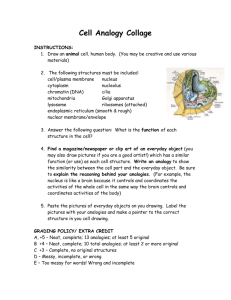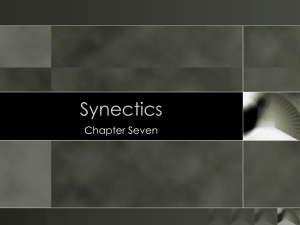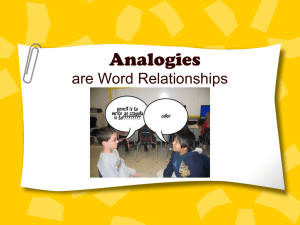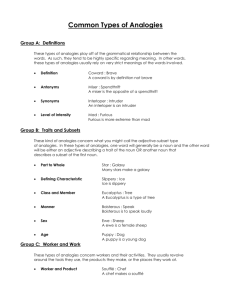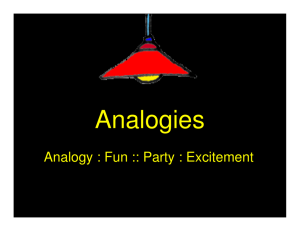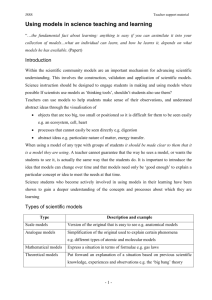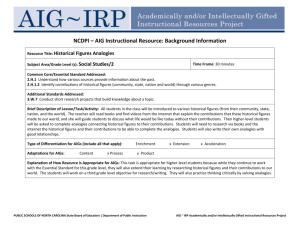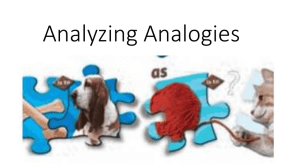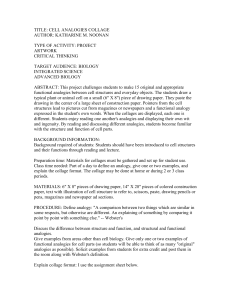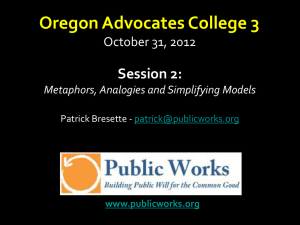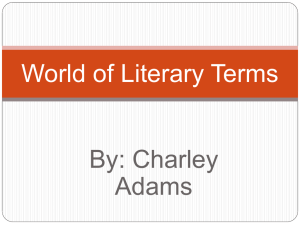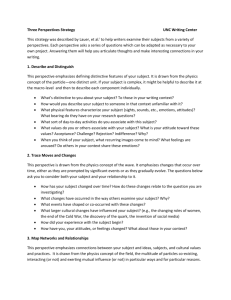Models in science
advertisement
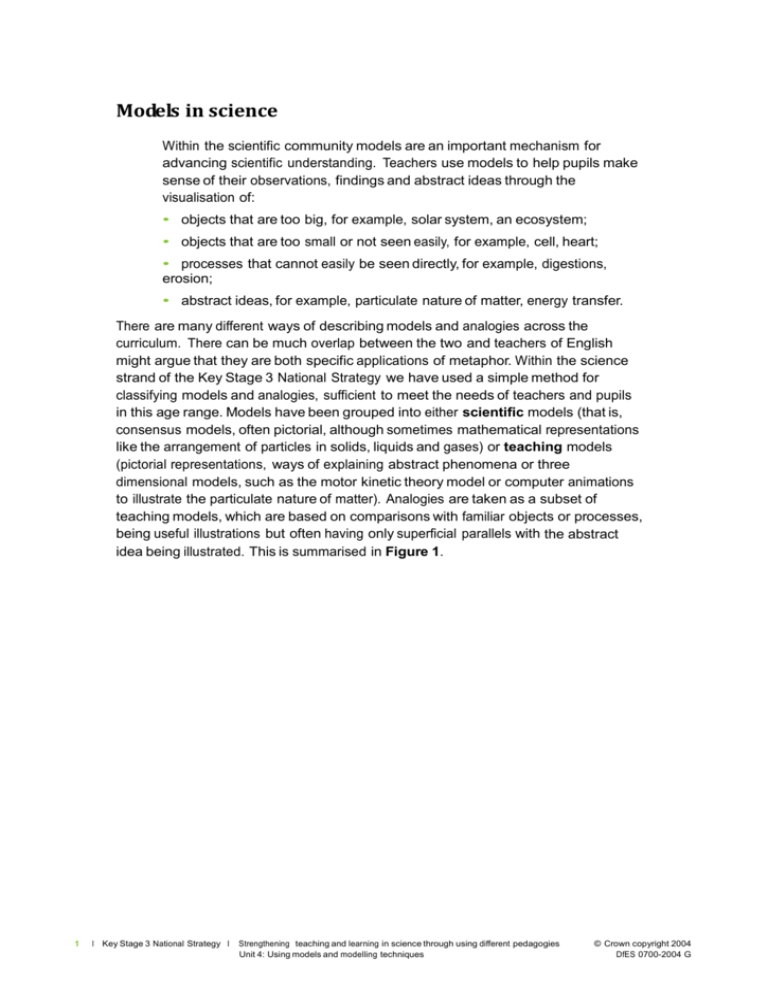
Models in science Within the scientific community models are an important mechanism for advancing scientific understanding. Teachers use models to help pupils make sense of their observations, findings and abstract ideas through the visualisation of: • objects that are too big, for example, solar system, an ecosystem; • objects that are too small or not seen easily, for example, cell, heart; • processes that cannot easily be seen directly, for example, digestions, erosion; • abstract ideas, for example, particulate nature of matter, energy transfer. There are many different ways of describing models and analogies across the curriculum. There can be much overlap between the two and teachers of English might argue that they are both specific applications of metaphor. Within the science strand of the Key Stage 3 National Strategy we have used a simple method for classifying models and analogies, sufficient to meet the needs of teachers and pupils in this age range. Models have been grouped into either scientific models (that is, consensus models, often pictorial, although sometimes mathematical representations like the arrangement of particles in solids, liquids and gases) or teaching models (pictorial representations, ways of explaining abstract phenomena or three dimensional models, such as the motor kinetic theory model or computer animations to illustrate the particulate nature of matter). Analogies are taken as a subset of teaching models, which are based on comparisons with familiar objects or processes, being useful illustrations but often having only superficial parallels with the abstract idea being illustrated. This is summarised in Figure 1. 1 l Key Stage 3 National Strategy l Strengthening teaching and learning in science through using different pedagogies Unit 4: Using models and modelling techniques © Crown copyright 2004 DfES 0700-2004 G Figure 1 Examples of teaching models in school science include: Examples of analogies (a subset of teaching models) appropriate to school science include: Spheres representing Earth, Moon and Sun to show night and day, etc. Energy as money Limbs as a lever system, antagonistic muscles ‘Domain’ theory of magnets Ball and spring models of particle structures Bank statement for energy audit Cakes and biscuits that resemble, for example, igneous or metamorphic rocks Toffees as elements, mint toffees as compounds and mints and toffees as mixtures Moving belt through pressure pads for current, voltage and resistance in a circuit The eye as a camera Transfer of sound or waves (for example, wave machines, slinkies) Digestive enzymes as scissors Squeezing toothpaste as peristalsis Food web to represent feeding relationships Balloons in bell jar model of lungs Visking tubing representing digestion What models and analogies do we use Look at the list given in Figure 1 for some examples and brainstorm with a colleague all the models and analogies that you have used in your science teaching recently. Keep this list, to reflect on when you have finished this unit. Models and analogies are often dynamic and they may be modified or achieve a different status during their useful life. All have benefits and limitations. Some teaching models, developed in the 1960s are now thought to be less useful, such as the use of Worcester circuit boards or the water circuit to illustrate flow of electricity. 2 l Key Stage 3 National Strategy l Strengthening teaching and learning in science through using different pedagogies Unit 4: Using models and modelling techniques © Crown copyright 2004 DfES 0700-2004 G Figure 2 summarises models and analogies in the context of school science teaching and learning. Figure 2 – Models in Key Stage 3 Science Models in science teaching can mainly be classified into two groups Scientific model (or consensus model) Teaching model This represents the accepted scientific view of a concept or idea: This is used to help a learner understand or visualise an idea, a process or a system: • • it is a visual or a physical representation; • it is a teaching method to help pupils visualise something abstract or invisible; • • • 3 it provides a representation or an explanation for a complex process; it is a consensus view held by the scientific community; it can be a mathematical or a physical representation or an explanatory theory; • it helps explain the abstract idea or invisible structure to the learner. Analogies are a subset of teaching models Analogies are: • based on an object or process very very familiar to pupils; • often stated as ‘it’s rather like …’; • based on superficial similarities or parallels to the abstract idea; • usually illustrative rather than explanatory; • often ‘stories’. it can help predict the behaviour of systems or events. l Key Stage 3 National Strategy l Strengthening teaching and learning in science through using different pedagogies Unit 4: Using models and modelling techniques © Crown copyright 2004 DfES 0700-2004 G
